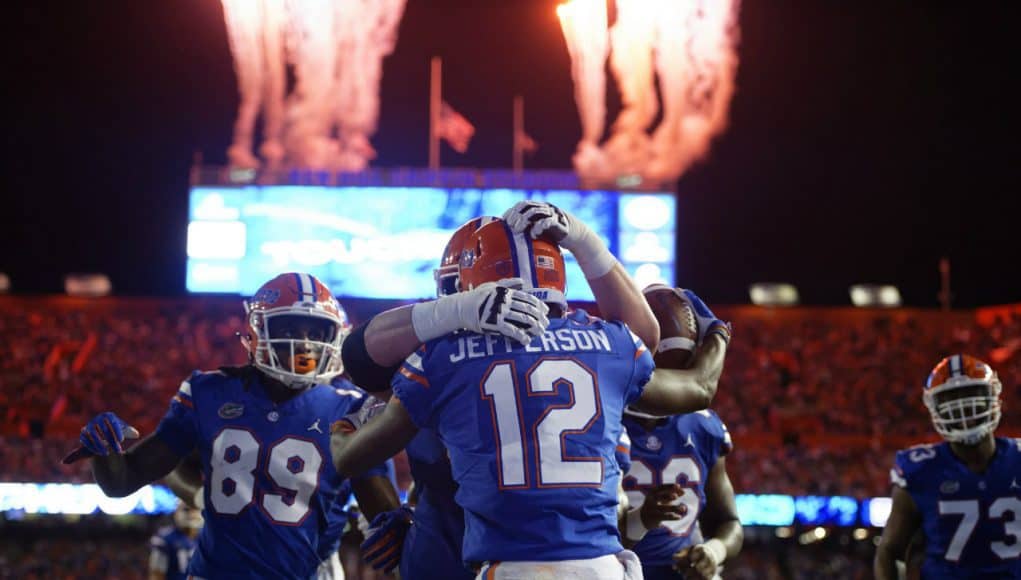Feleipe Franks took the snap and then a few steps towards the line of scrimmage. The 6’5” quarterback stopped, jumped up and connected with Tyrie Cleveland in the end zone for a touchdown.
The jump pass has a special place in the hearts of Florida fans. Tim Tebow first hit it against LSU in a 23-10 win but the jump pass was in Dan Mullen’s playbook long before that. On Saturday Franks admitted that he hadn’t seen the two previous jump passes at Florida but he did his homework before meeting with the media on Monday and had watched both.
After the game Saturday Mullen and Tate Casey — the recipient of Tebow’s first jump pass — had a playful back and forth. Casey told Mullen his was prettier, Mullen joked that Casey was falling down when he caught his and that’s why it looked better.
Mullen’s offense runs most effectively with a quarterback that can run. He and Urban Meyer inherited Alex Smith when they took over at Utah. Smith wasn’t a statue but he wasn’t the kind of runner that Mullen needed, so they used a lot of direct snaps to running backs in lieu of having Smith carry the ball 15-20 times a game.
The first jump pass, for a Mullen offense was in 2003. The Utes were locked in a tight battle with Air Force. The way overtime in college works led to Mullen using that direct snap frequently and tight end Ben Moa was the guy handling those snaps.
“We pounded it in like three times in a row with Ben,” Mullen recalled on Monday afternoon. “Every time we’d run it just off tackle, and he’d just scored the tying touchdown. It was the overtime you had to, I think it was the third; we had to go for two.”
Mullen called for the jump pass, Moa ran to the line and found Matt Hansen in the end zone for the game winning two-point conversion. Just like that the jump pass was born.
At that time it wasn’t an option. The way the play was designed was exactly how it played out. Over the years, as the game and Mullen evolved, it turned into a run-pass-option (RPO). Mullen noted that they would call the play frequently with Dak Prescott at Mississippi State but Dak would have a lane and run the ball in for a score rather than throwing it. That’s how it plays out sometimes. It’s about calling the play at the right time, more so than the actual play itself.
“A lot of times with plays, you’re going to trick plays or like deceptive-type play, it’s not really the scheme as much as when you call it is more important than what you’re doing,” Mullen said. “I’m setting them up for this reverse pass. I’m setting them up for the jump pass. I’m setting them up for the fumble rooskie or whatever it is. It’s more of when you call it and is it the right situation.”
It’s not necessarily a staple in the offense but it’s not really a gimmick play either. The run-pass-option has become a cornerstone of Mullen’s offensive playbook and the jump pass is just another iteration of the RPO. He’s 3-3 calling them at Florida, so expect to see more quarterback finger rolls near the end zone.
“They’ve got to defend it. It’s like any run-pass option in place,” Mullen said. “We’ll run some quarterback run. When we run quarterback run they’ve still got to be ready to defend the pass with the play-action aspect of it.”
Mullen is 3/3 calling it at Florida but it’s not always successful.
“We’ve missed some,” he said. “I’ve called it, yeah. You guys just haven’t watched me enough over the last nine years. We’ve called it a bunch of times in games and it didn’t always work.”


